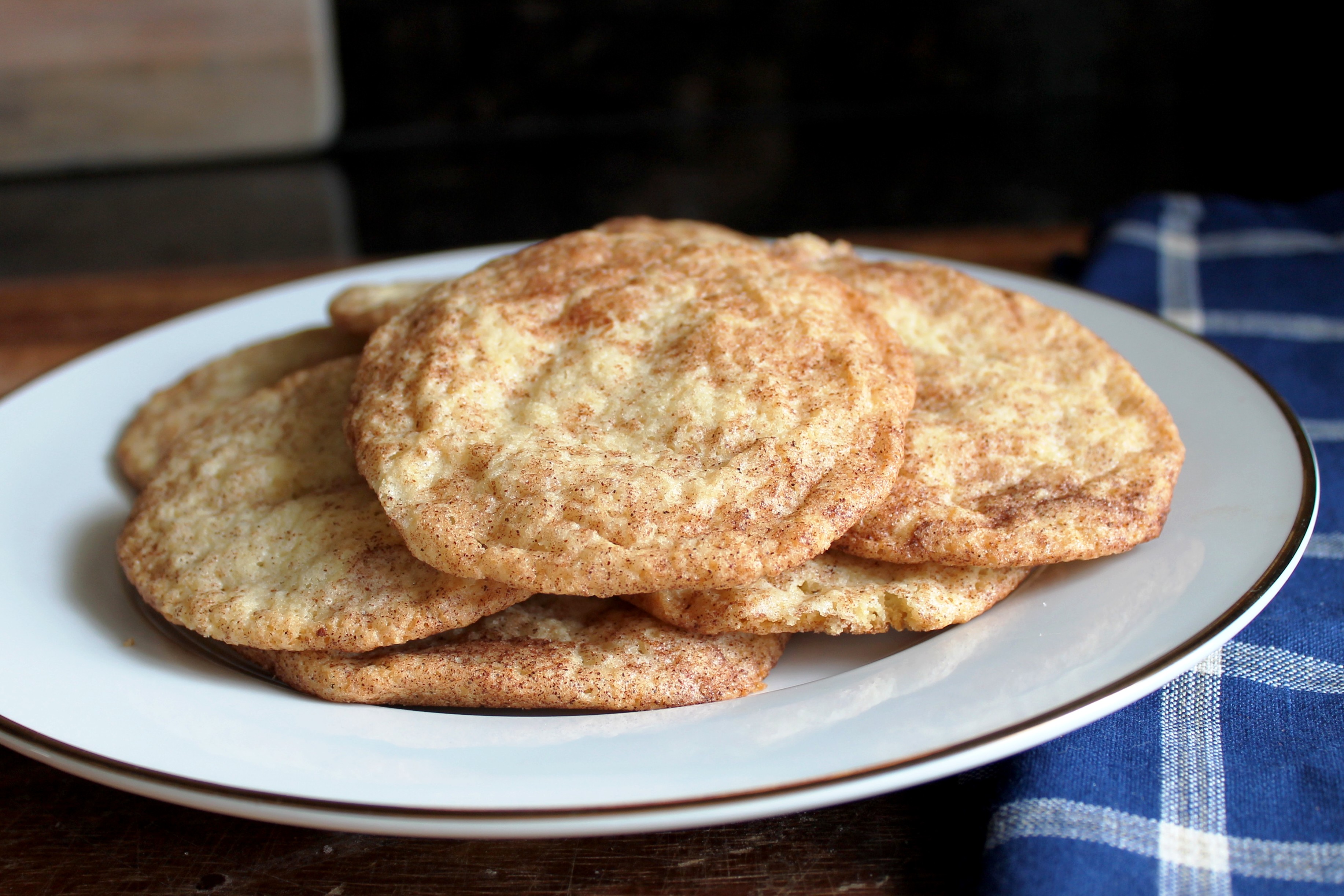 While it can’t be said that we’ve completely ignored the classic cinnamon and sugar flavor combination of Snickerdoodles, since we have featured it in not one, but two delectable recipes (see our Pumpkin Cheesecake Snickerdoodle Bars, and Snickerdoodle Cupcakes), we have taken our sweet time getting and actual Snickerdoodle Cookie recipe on the blog. Today, in the tradition of “two birds with one stone,” we’re putting that omission to rest, while simultaneously bringing this year’s Holiday Cookie Extravaganza to its glorious conclusion. As we’ve mentioned in the past, if you want a stellar gluten free cookie, you have to start with the best possible traditional recipe you can find. Having had such resounding success in the past with our Brown Butter Chocolate Chip Cookies, and more recently with the Chocolate Fudge Cookies—in both cases, the gluten free version is indistinguishable from the regular one—we looked to Cook’s Illustrated for our starting point. True to form, they did not disappoint.
While it can’t be said that we’ve completely ignored the classic cinnamon and sugar flavor combination of Snickerdoodles, since we have featured it in not one, but two delectable recipes (see our Pumpkin Cheesecake Snickerdoodle Bars, and Snickerdoodle Cupcakes), we have taken our sweet time getting and actual Snickerdoodle Cookie recipe on the blog. Today, in the tradition of “two birds with one stone,” we’re putting that omission to rest, while simultaneously bringing this year’s Holiday Cookie Extravaganza to its glorious conclusion. As we’ve mentioned in the past, if you want a stellar gluten free cookie, you have to start with the best possible traditional recipe you can find. Having had such resounding success in the past with our Brown Butter Chocolate Chip Cookies, and more recently with the Chocolate Fudge Cookies—in both cases, the gluten free version is indistinguishable from the regular one—we looked to Cook’s Illustrated for our starting point. True to form, they did not disappoint.
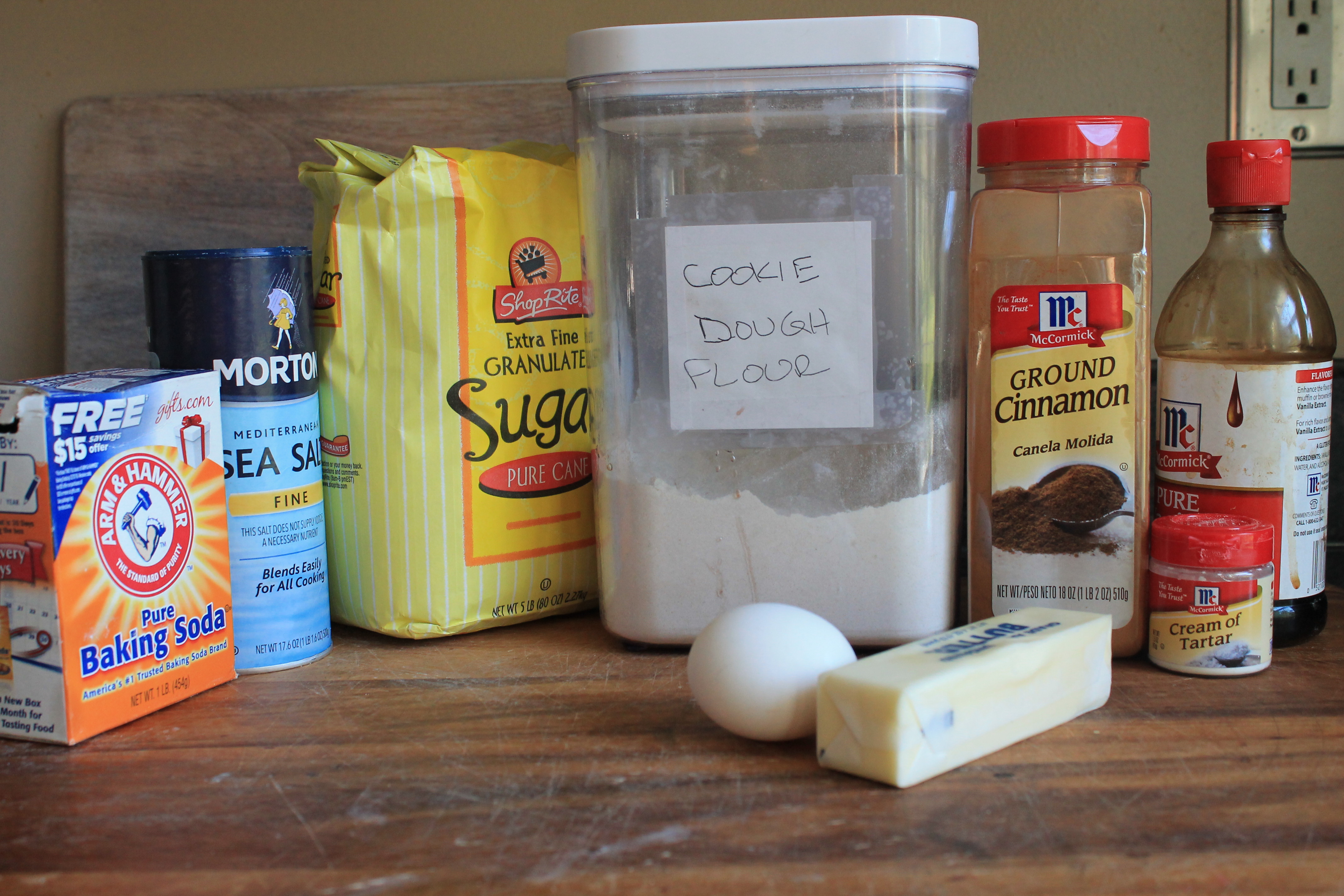 Their recipe for Snickerdoodles is, as usual, a thing of simple beauty. All it took were a couple of adjustments and before long, we had the perfect, allergy-friendly substitute ready for taste-testing. As expected, it passed with flying colors.
Their recipe for Snickerdoodles is, as usual, a thing of simple beauty. All it took were a couple of adjustments and before long, we had the perfect, allergy-friendly substitute ready for taste-testing. As expected, it passed with flying colors.
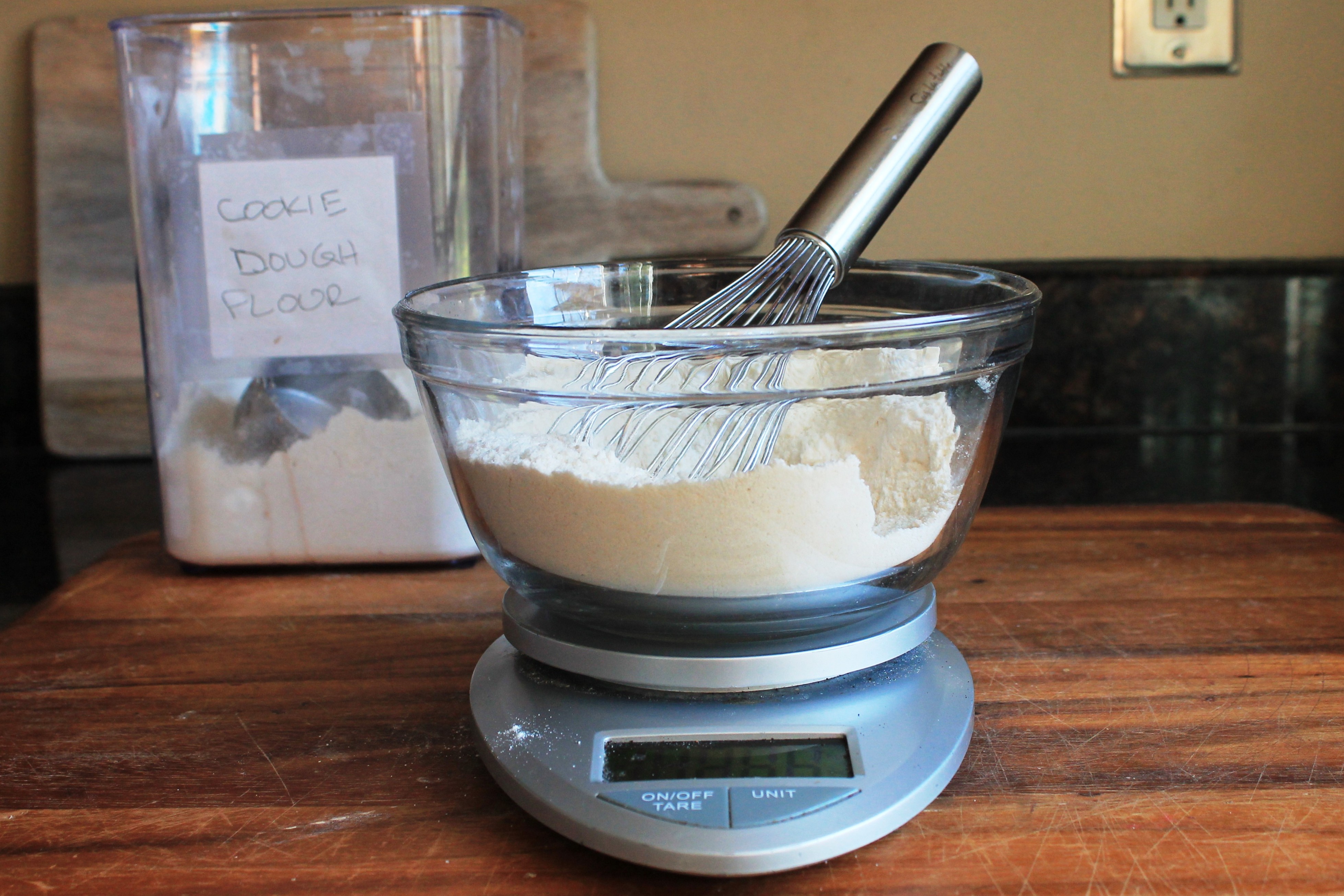 Much of the credit goes to the gluten free Cookie Flour Blend that we “borrowed” from Alton Brown last year. Given that Mr. Brown and Cook’s Illustrated have such rigorous recipe testing standards, rooted in good old-fashioned food science, it’s no surprise at all that his gluten free flour blend and their failsafe cookie recipes are a match made in baking heaven.
Much of the credit goes to the gluten free Cookie Flour Blend that we “borrowed” from Alton Brown last year. Given that Mr. Brown and Cook’s Illustrated have such rigorous recipe testing standards, rooted in good old-fashioned food science, it’s no surprise at all that his gluten free flour blend and their failsafe cookie recipes are a match made in baking heaven.
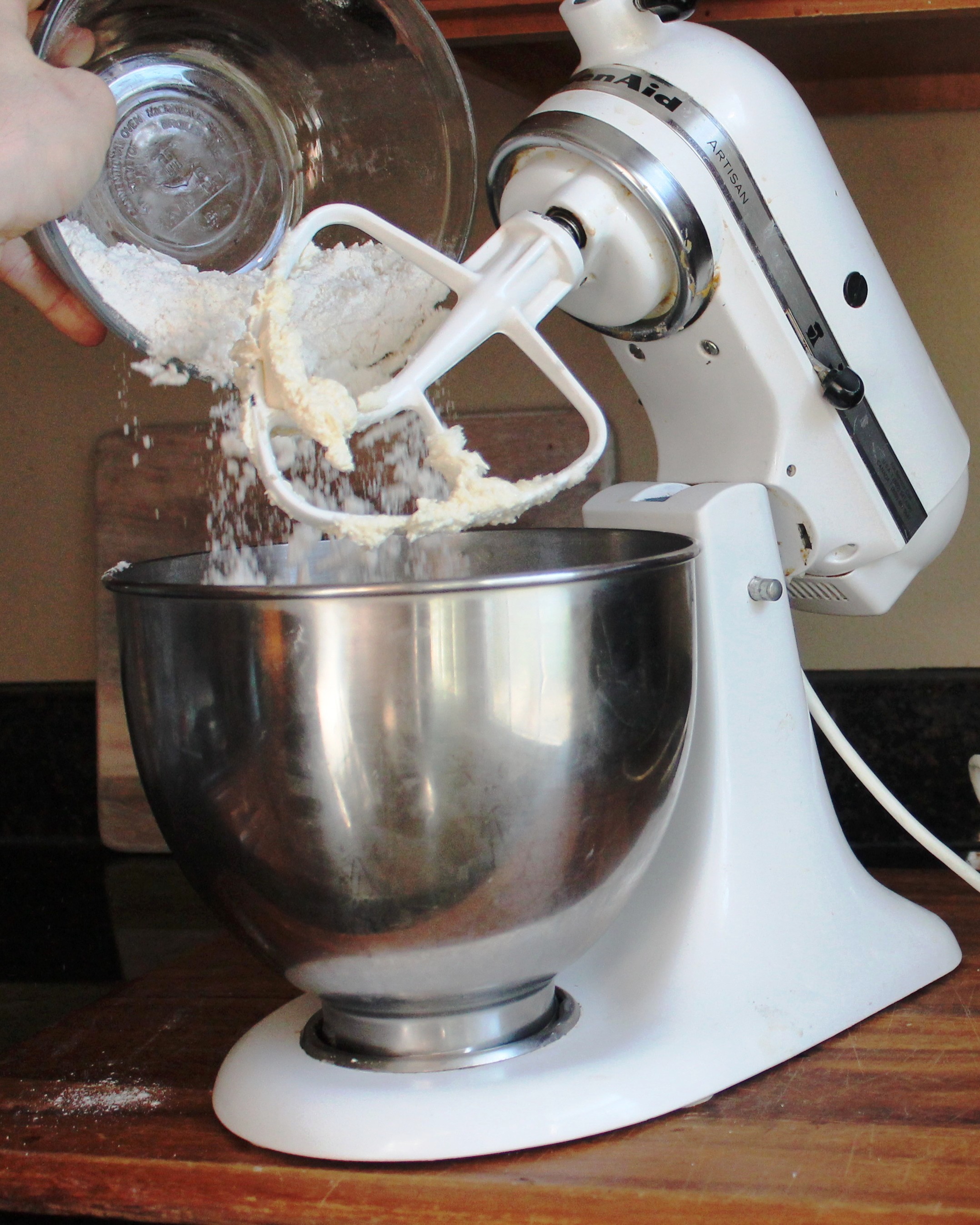 Seriously, they should just run off to a chapel in Vegas and make it official, then get busy making little gluten free cookie babies. Their family album would be, like, the best Cook(ie) Book evaah! There were a couple of small changes made from the original recipe, but they were customizations based on flavor preferences more than anything else.
Seriously, they should just run off to a chapel in Vegas and make it official, then get busy making little gluten free cookie babies. Their family album would be, like, the best Cook(ie) Book evaah! There were a couple of small changes made from the original recipe, but they were customizations based on flavor preferences more than anything else.
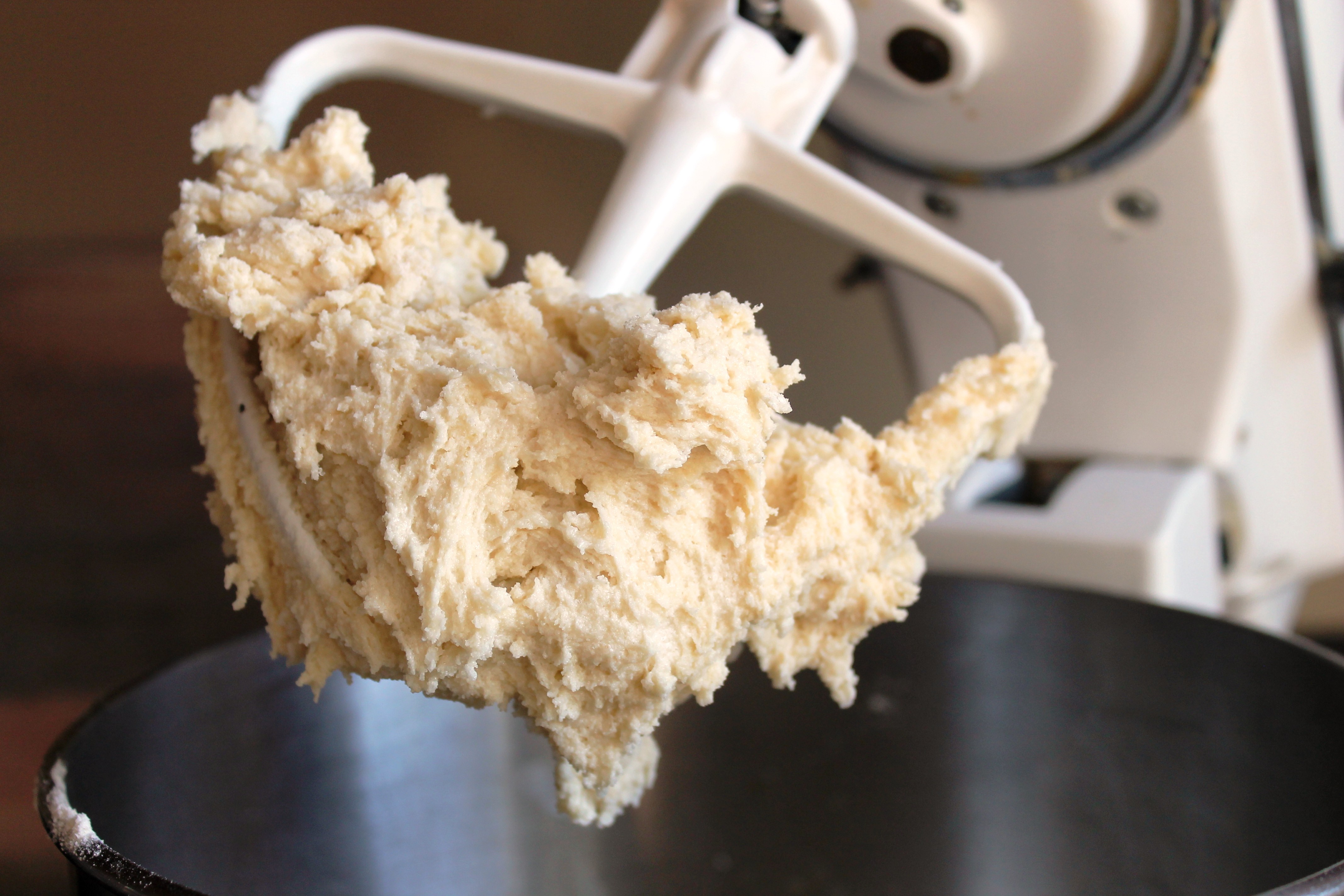 The Cook’s Illustrated version used equal parts unsalted butter and vegetable shortening. The shortening, while failing to impart any additional flavor to the dough, does prevent the cookies from “spreading” too much in the oven, which is a plus if you like round cookies rather than square, awkward ones. We decided to use all butter for its extra-rich and creamy comfort food quality (and extra butteriness, duh), and we stand by that.
The Cook’s Illustrated version used equal parts unsalted butter and vegetable shortening. The shortening, while failing to impart any additional flavor to the dough, does prevent the cookies from “spreading” too much in the oven, which is a plus if you like round cookies rather than square, awkward ones. We decided to use all butter for its extra-rich and creamy comfort food quality (and extra butteriness, duh), and we stand by that.
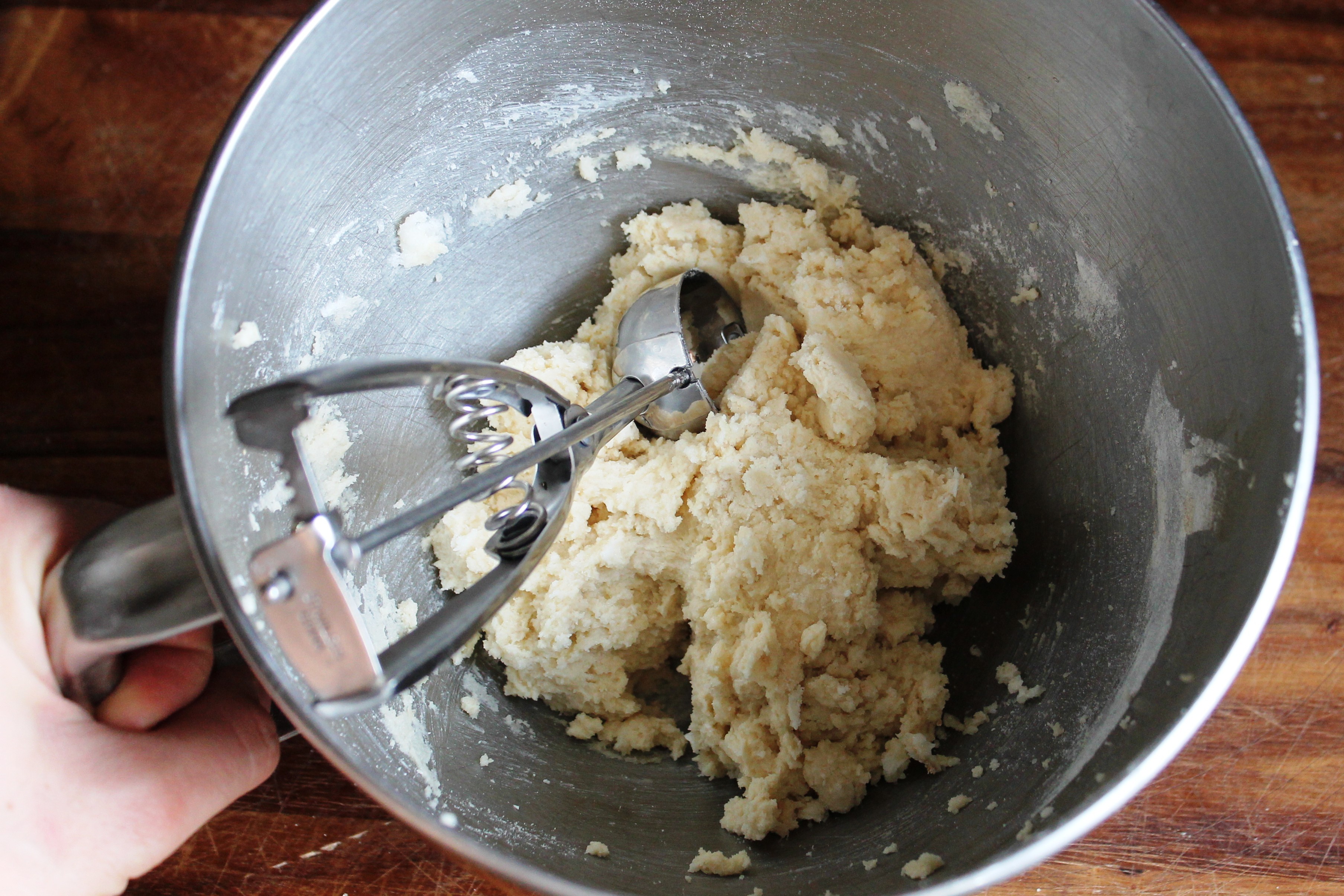 The problem of spreading was dealt with by placing the dough in the refrigerator for 30 minutes before scooping. This step is necessary not only for the sake of full hydrating the xanthan gum, but also because the chilled dough holds its shape better in the oven. Chilling also makes it easier to handle and coat with cinnamon sugar once it has been scooped. (Cha-ching!)
The problem of spreading was dealt with by placing the dough in the refrigerator for 30 minutes before scooping. This step is necessary not only for the sake of full hydrating the xanthan gum, but also because the chilled dough holds its shape better in the oven. Chilling also makes it easier to handle and coat with cinnamon sugar once it has been scooped. (Cha-ching!)
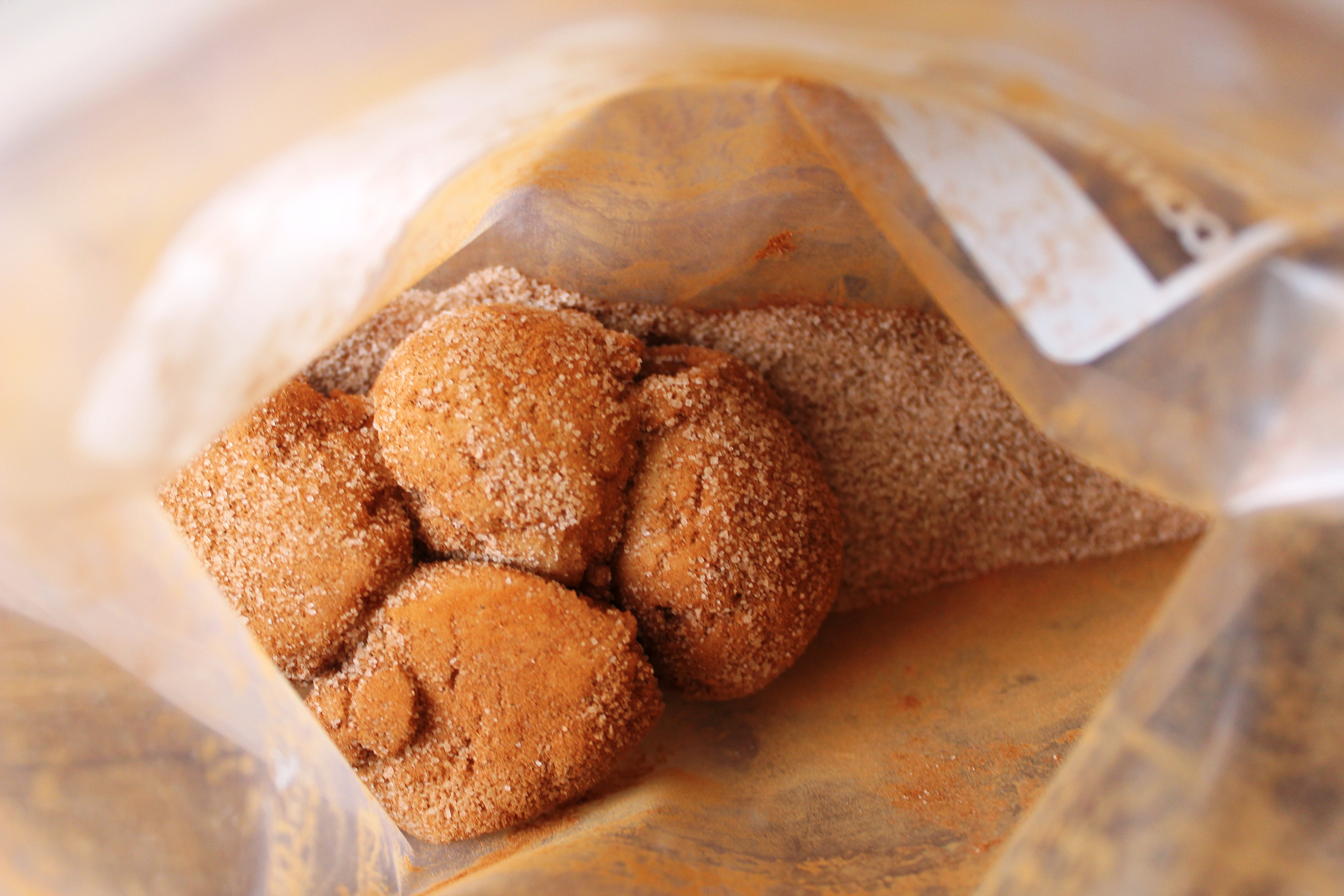
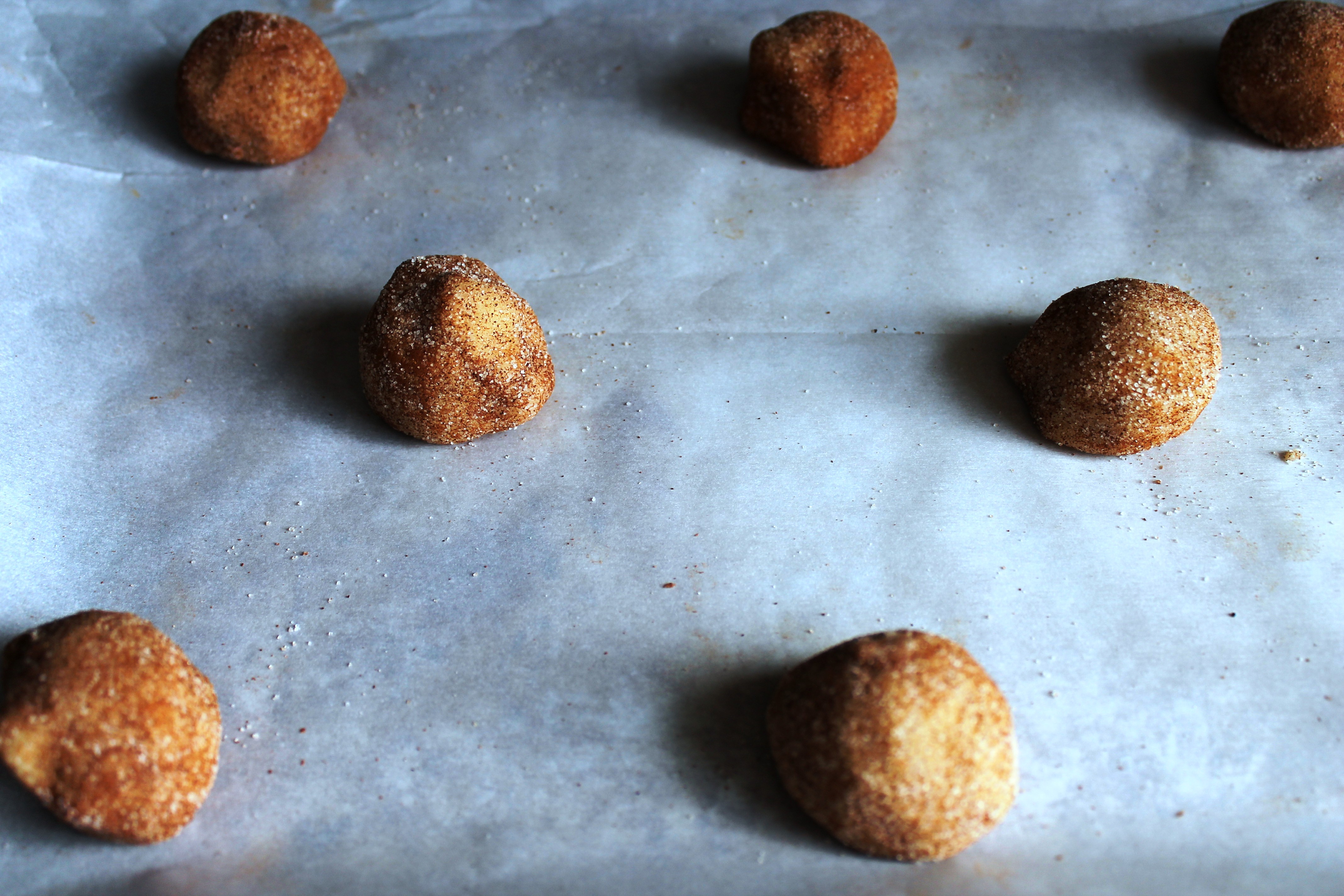 They also eliminated the vanilla from their version, claiming that it allows the tang of the cream of tartar to shine through, but we really love the sweet note that the extract imparts, so we included a teaspoon of it in the dough. That, along with the butter, provides a wonderful flavor foundation, highlighting even more the cinnamon and sugar that make this cookie such a perennial favorite, all without overpowering the cream of tartar. Everybody wins, everybody’s happy.
They also eliminated the vanilla from their version, claiming that it allows the tang of the cream of tartar to shine through, but we really love the sweet note that the extract imparts, so we included a teaspoon of it in the dough. That, along with the butter, provides a wonderful flavor foundation, highlighting even more the cinnamon and sugar that make this cookie such a perennial favorite, all without overpowering the cream of tartar. Everybody wins, everybody’s happy.
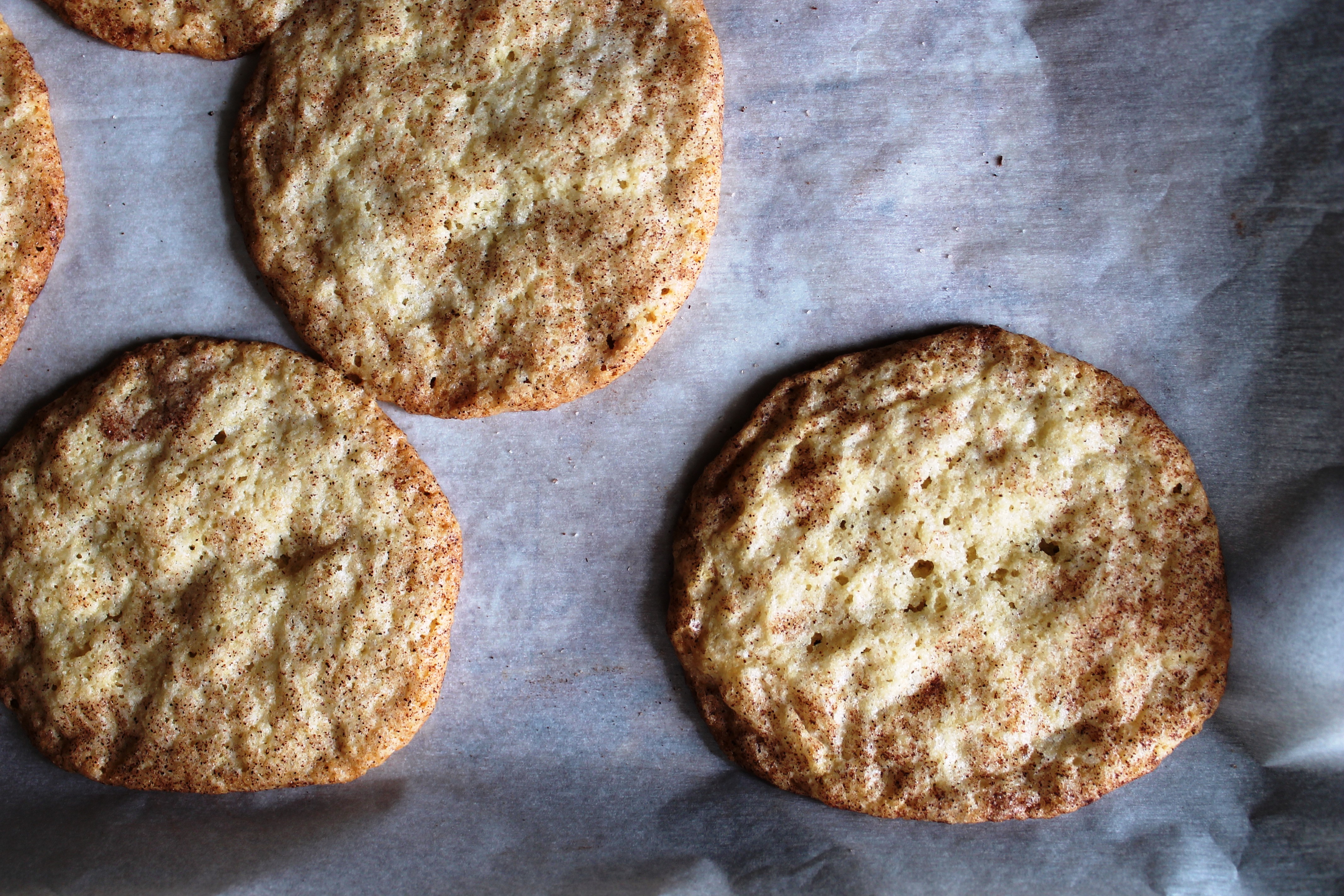 Our archive of gluten free classic cookies continues to grow, and while we’ve covered most of our favorites, if there are any varieties that you would like us to tackle, let us know, either here or on one of our social media pages. We love feedback almost as much as we love cookies, and that’s a LOT, in case you hadn’t figured that out already. Happy baking, and have a safe, wonderful holiday season. Cheers!
Our archive of gluten free classic cookies continues to grow, and while we’ve covered most of our favorites, if there are any varieties that you would like us to tackle, let us know, either here or on one of our social media pages. We love feedback almost as much as we love cookies, and that’s a LOT, in case you hadn’t figured that out already. Happy baking, and have a safe, wonderful holiday season. Cheers!
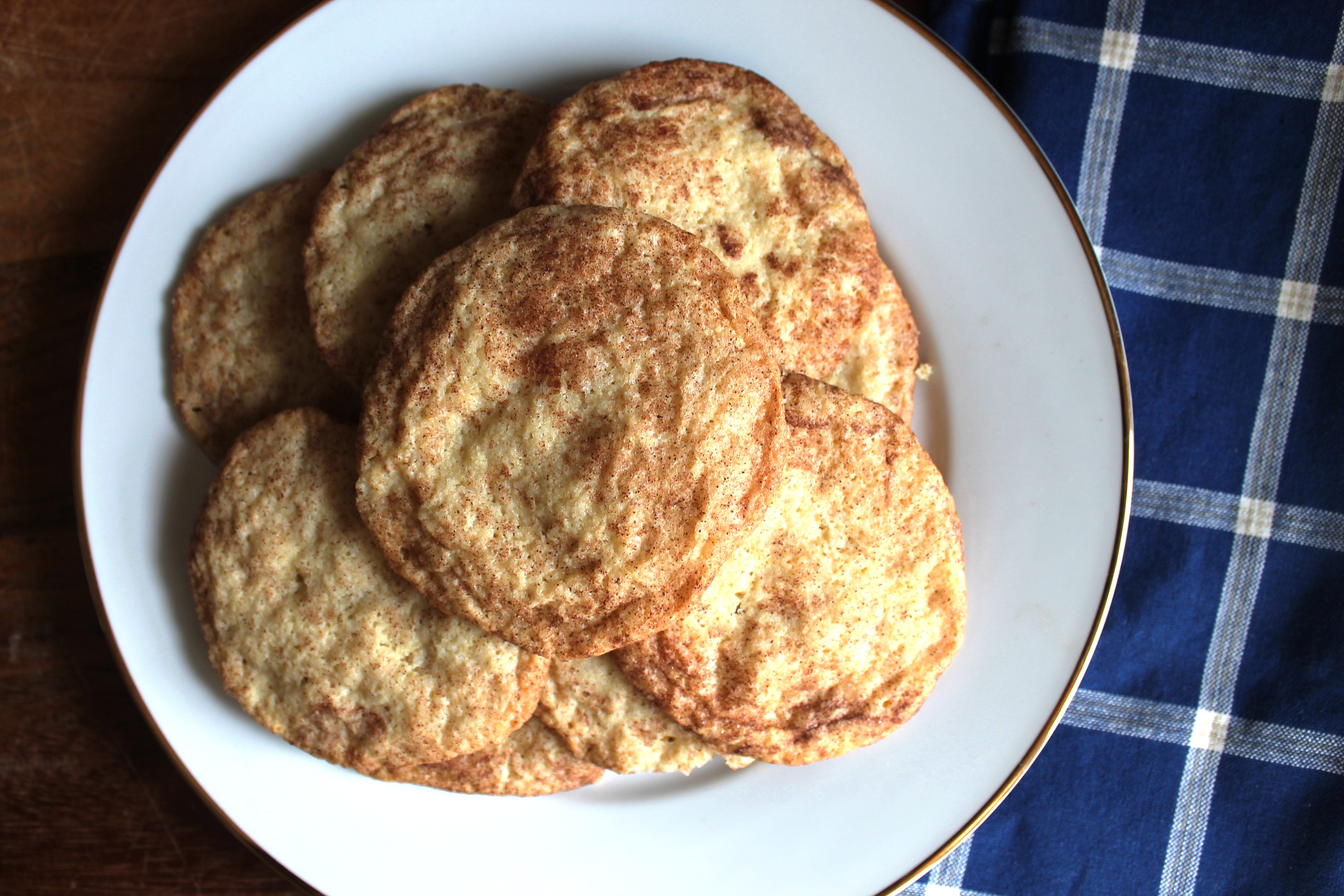 Adapted from the Cook’s Illustrated Cookbook.
Adapted from the Cook’s Illustrated Cookbook.
December 2020 Update: We revamped our Snickerdoodle recipe here, ramping up the flavor and adding a couple techniques to prevent the dreaded Gluten-Free-Cookie-spread. Enjoy!
- 1 3⁄4 cups (12 ¼ ounces) sugar, divided
- 1 tablespoon ground cinnamon
- 2 1⁄2 cups (12 ½ ounces) gluten free cookie flour blend
- 1 teaspoon xanthan gum
- 2 teaspoons cream of tartar
- 1 teaspoon baking soda
- 1⁄ 2teaspoon table salt
- 2 sticks (1 cup) unsalted butter
- 2 large eggs
- 1 teaspoon vanilla extract
- Adjust an oven rack to the middle position and heat the oven to 375 degrees. Combine ¼ cup of the sugar and the cinnamon in a large freezer bag for coating and set aside. Whisk the flour, xanthan gum, cream of tartar, baking soda, and salt together in a large bowl and set aside.
- Beat the butter and remaining 1½ cups sugar together in a large bowl using an electric mixer on medium speed until light and fluffy, 3 to 6 minutes. Beat in the eggs, one at a time, and vanilla until incorporated, about 30 seconds, scraping down the bowl and beaters as needed.
- Reduce the mixer speed to low and slowly mix in the flour mixture until combined, about 30 seconds. Give the dough a final stir with a rubber spatula to make sure it is combined. Refrigerate dough for 30 minutes to firm up.
- Using a cookie scoop, portion 2 tablespoons of dough at a time into balls, then roll in the cinnamon sugar to coat and lay on two parchment-lined baking sheets, spaced about 2½ inches apart. Bake the cookies, one sheet at a time, until the edges are set and just beginning to brown but the centers are still soft and puffy, 10 to 12 minutes, rotating the baking sheet halfway through baking.
- Let the cookies cool on the baking sheet for 10 minutes, then serve warm or transfer to a wire rack and let cool completely.
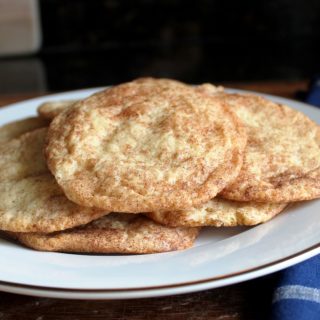
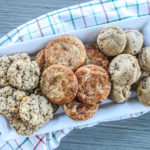
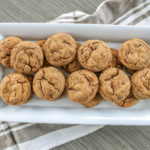
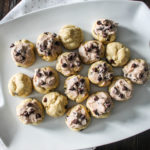
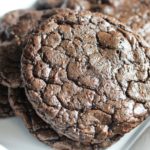
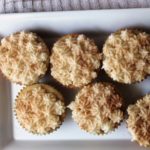
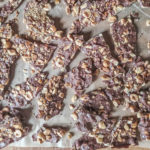
Leave a Reply